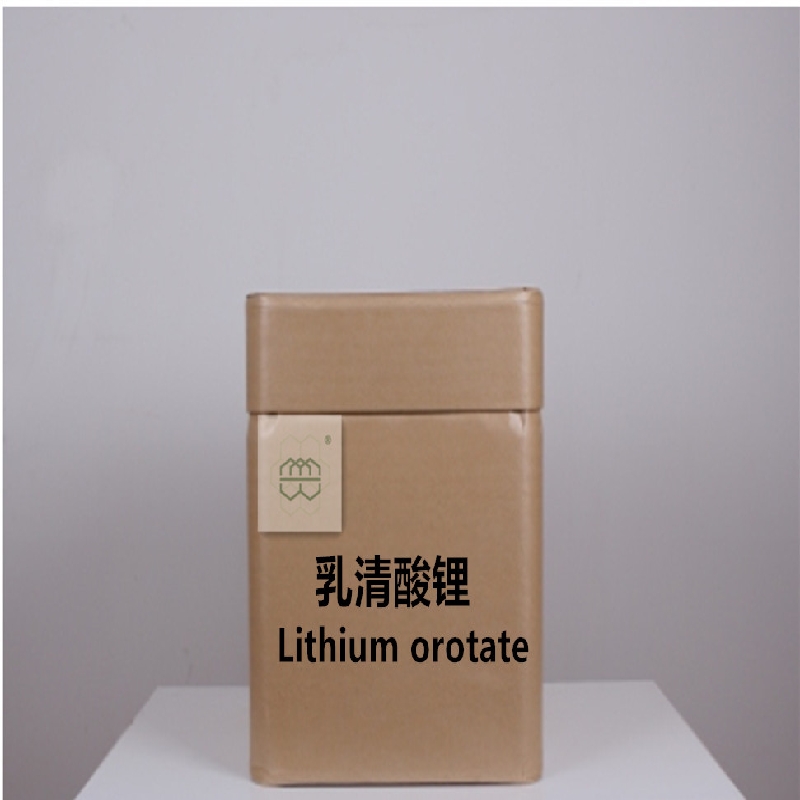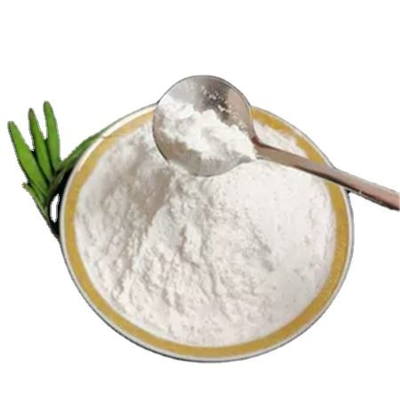-
Categories
-
Pharmaceutical Intermediates
-
Active Pharmaceutical Ingredients
-
Food Additives
- Industrial Coatings
- Agrochemicals
- Dyes and Pigments
- Surfactant
- Flavors and Fragrances
- Chemical Reagents
- Catalyst and Auxiliary
- Natural Products
- Inorganic Chemistry
-
Organic Chemistry
-
Biochemical Engineering
- Analytical Chemistry
-
Cosmetic Ingredient
- Water Treatment Chemical
-
Pharmaceutical Intermediates
Promotion
ECHEMI Mall
Wholesale
Weekly Price
Exhibition
News
-
Trade Service
Recently, the video of the 2-meter giant rice in the Longping Rice Cultivation Park in Lukou Town, Changsha County, Hunan Province, will enter the mature stage has attracted attention
.
What is Giant Rice? What is the relationship between giant rice and hybrid rice? Has Academician Yuan Longping's "dream of cooling down under the grass" come true? Is the giant rice delicious? The reporter interviewed Xia Xinjie
, a researcher at the Institute of Subtropical Agroecology of the Chinese Academy of Sciences, who is known as the "father of giant rice".
Reporter: What is giant rice? What is the relationship between giant rice and hybrid rice?
Xia New Territories: As the name suggests, giant rice is rice that is larger in shape and more productive than ordinary rice
.
The giant rice we first studied was a conventional rice, which was selected from the best and the best, not a hybrid rice
.
Giant rice is a new germplasm material
of ultra-large biomass rice with completely independent intellectual property rights obtained on the basis of existing excellent rice seed sources, using a series of biological genetic breeding technologies such as mutant screening, indica japonica subspecies and wild rice distant hybridization.
However, the number of conventional giant rice is very small, so we use conventional giant rice as a parental material, cross it with other ordinary rice, produce many offspring and then plant it, which solves the problem of
small number of giant rice.
The giant rice that is now being planted in the field is a hybrid giant rice
.
The giant rice that is now being promoted and cultivated in various places is also a new type of hybrid rice
.
In fact, in 2013, conventional giant rice was developed in China, and after 2015, it was made into hybrid rice
.
We used Indica 93-11, Nippon Haru, etc.
as materials to obtain mutant plants, screened suitable target mutants, and then crossed them through field pollination, obtained a relatively stable offspring group, and then pollinated and crossed with Chaling wild rice, and selected and purified them year by year, and finally obtained basically stable giant rice strains
.
Reporter: It is said that Academician Yuan Longping's "dream of cooling down under the grass" has been realized
.
Is this statement accurate?
Xia New Territories: At present, China's rice production has reached the upper limit
of plant physiology in terms of its harvest index.
Due to the limitation of its own biomass, in the past 20 years, the increase in rice production in China has been very limited, not more than 15%.
In order to make a big breakthrough in rice yield in the future, it is necessary to cultivate a new type of rice
with a large biomass.
Academician Yuan Longping's "dream of cooling under the grass" is to dream of planting giant rice that can cool under the grass, and to increase the rice yield of its own biological yield by increasing its own biological yield
.
Today, giant rice has been planted on a trial basis, but the "dream of cooling off under the grass" has not really been realized
.
Only by increasing the yield of giant rice per mu to 1200 kg or even 1500 kg can we truly realize the "dream of cooling under the grass"
.
Why? On October 16, 2017, giant rice was successfully cultivated in Jinjing Town, Changsha County, Changsha City, Hunan Province
.
Yuan Longping said that as long as the planting technology is passed, the yield of giant rice per mu can reach 1200 kg to 1500 kg
.
Today's giant rice plants are as high as 1.
8 meters to 2.
2 meters, about 1 meter higher than ordinary rice, and the area biomass can reach 40 tons/ha, which is more than
1.
5 times that of existing rice.
If the optimization of cultivation technology is improved and the harvest index of giant rice hybrid varieties is increased to the level of existing super hybrid rice, the theoretical single-season yield will exceed 1200 kg/mu
.
Since 2017, the research team has conducted experiments in many provinces and regions in the south and found that under the moderate fertility level and the conventional fertilizer water management conditions in the field, the single-season yield of giant rice can reach 800 kg/mu, which is 100 kg to 200 kg
higher than that of ordinary hybrid rice.
Among them, the giant rice variety "Jufeng No.
5" plant is more than 2 meters high, with an average effective tillering of 51, which is 2 times more than ordinary rice; The number of seeds per panicle is as high as 680, which is 2 to 3 times
more than ordinary rice.
The test data show that from 2017 to 2018, under the conditions of ordinary rice field and conventional field management in the experimental area of Jinjing Town, Changsha County, its single-season yield was stable at 660 kg to 860 kg per mu, which was much higher than the national average yield of more than 440 kg and the yield of local hybrid rice in
Hunan.
This year, due to climatic reasons, many places are relatively arid, affected by drought, the yield of 200 mu of giant rice planted in Xichong County, Sichuan Province, is only more than 650 kg, but it is also about
100 kg more than the conventional hybrid rice in the same period.
Under normal circumstances, the production capacity of the giant rice mu of the test field reaches more than 1,000 kg, but the mu yield promoted by the field still needs to be worked on
.
The height of the seedlings in the "Cool Dream" has been achieved, but the yield is still some way from
the target.
Reporter: What is the development prospect of giant rice?
Xia New Territories: The development prospects of giant rice are very good, especially the experiment of combining planting and breeding, which reflects the advantages of
giant rice.
Giant rice can play a good shading effect, coupled with the huge rice stalk is thick, the planting density is much smaller than other rice, which can provide a good living space
for the animals under the rice.
In 2017 and 2018, the research team built a 300-mu "giant rice" ecological comprehensive breeding mode test and demonstration area in Xiangfeng Village, Jinjing Town, Changsha County, without the use
of chemical fertilizers, pesticides, antibiotics and so on.
Compared with the existing comprehensive rice field breeding mode, the yield of rice is at least 1 times higher, the survival rate of farmed animals such as frogs, loach, rice flower fish is also increased by more than 1 times, the growth cycle is shortened by 15 days to 20 days, the weight of individuals is increased by more than 20%, and the yield is increased by more than
1.
5 times.
In addition to the combination of planting and breeding, the giant rice biomass is huge, and it can produce 3 tons to 5 tons of straw per mu, and the straw can be raised for livestock after treatment, which also has a lot of added value
.
In terms of planting environment, giant rice is not harsh
on the growing environment.
The root system of giant rice is well developed, reaching a depth of 35 cm to 60 cm, which is more than 1 times the length of the root system of ordinary rice, and the total root system is 3 to 4 times
that of ordinary rice.
Its well-developed root system greatly reduces nutrient loss and can fully absorb and utilize the nutrients around rice
.
Rice fields, ditches, ponds, dry wetlands, barren newly reclaimed land, and saline and alkali land can all become their "footholds"
.
For example, the giant rice planted in 2020 on the Yangjiang River in Guangdong Province has withstood repeated soaking in seawater, producing 1,040 catties of rice per mu and more than 1,000 catties
of shrimp at the same time.
In 2020, Sichuan Qianwei County planted more than 400 mu of giant rice, producing more than 800 catties of fish per mu and nearly 1,000 catties of
rice.
In May this year, the giant rice was first tried in the Beijing-Tianjin-Hebei region, and has now entered the filling period, and is expected to enter the harvest period
in October.
Giant rice has also begun to be planted in the black soil of the
northeast.
At present, more than 300 planting sites in 22 provinces have tried to plant nearly 20,000 mu
of giant rice.
There are also concerns that when giant rice grows so tall, fertilizers and pesticides will definitely be used more, which will affect food security
.
This kind of worry is not necessary
.
Due to the tall shape, deep roots and leafy leaves, thick stems, suitable for planting, long growth period and large flood depth, the giant rice plant can provide a good habitat environment
for rice farmed animals such as frogs, fish, loach and duck.
Combined with relevant technologies, it can be used to create a new model of efficient ecological three-dimensional cultivation agriculture with sustainable circular development, and make full use of this special advantage of the combination of giant rice planting and breeding to enhance the economic and ecological benefits
of rice fields.
Although the price of giant rice seedlings is higher than that of ordinary rice seedlings, the cost of planting 1 mu of giant rice is about
200 yuan lower than the cost of planting 1 mu of ordinary rice.
This is because the giant rice is "good to feed", and there is no trouble of weeding in the follow-up, considering the increase in rice yield and the use of straw as silage, each mu of giant rice can increase the income by more than
800 yuan.
Reporter: How does the giant rice taste?
Xia New Territories: After testing by the Food Quality Inspection and Testing Center of the Ministry of Agriculture and Rural Affairs (Wuhan), the rice quality has reached the third level of national high-quality rice, breaking through the difficulty of "high yield, low quality and poor taste" of hybrid rice, and after testing and analysis, it is found that the heavy metal content of giant rice is far below the national standard red line
.
(Edited by Li Chuang)







